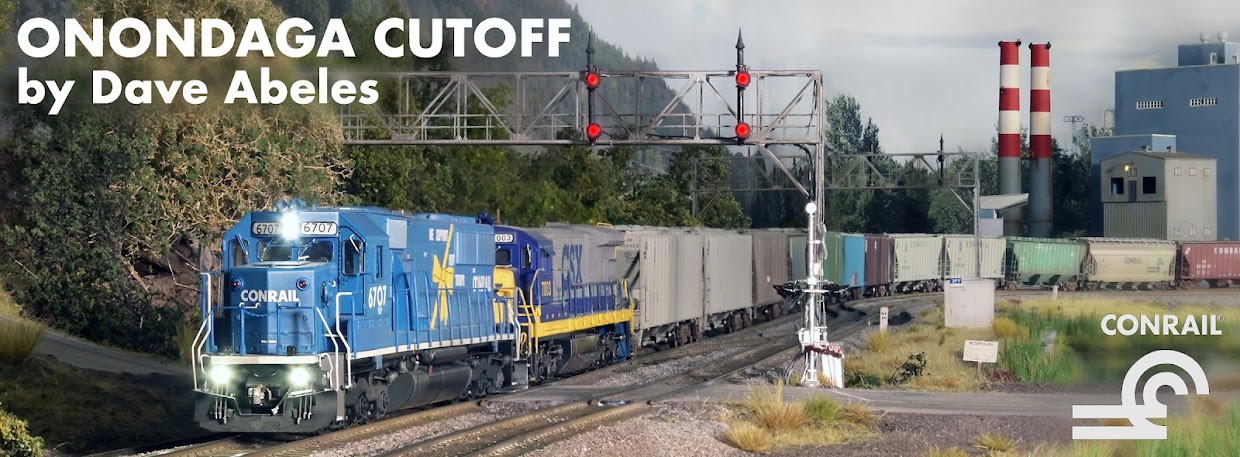It is amazing to me that the signals on the Onondaga Cutoff are all approaching 10 years in operation. The system has worked very well, overall, and I would do it again given the options back then. The only downside to the current-based detection and the 3.6k Ohm resistors is the rate at which the rails get dirty. A simple track cleaning ahead of each session essentially guarantees excellent detection, which is the foundation of good signal operations.
One other intermittent issue which comes up each fall and each spring as the weather changes is the occasional dark head issues with the signals. In nearly every case, that has turned out to be traced to loose wires in the screw terminals (Digitrax 'TSMK' boards) beneath each signal. The searchlight heads are comprised of three LEDs in each head, one each for red, yellow, and green. The wires that connect them to the system are tiny: 'magnet' wire, a superfine insulated 36-gauge copper wire.
A tip from fellow signal modeler Rodney Kantorski turned me on to a tool called a ferrule, essentially a small metal tube with a plastic collar at one end. The thin wire slides inside, and a special crimper is then used to crimp the metal ferrule tube tightly about the wire, essentially increasing the gauge with no soldering needed. Thanks, Rodney!
This allows the wire (plus crimped ferrule) to be reinserted into the screw terminal and tightened, which results in a nice robust friction connection.
So far, every head so equipped has had no issues with the weather change. Success! State of good repair projects can really add to the satisfaction in the hobby.



Indeed, SOGR is so important in the model & prototype worlds !!!
ReplyDelete